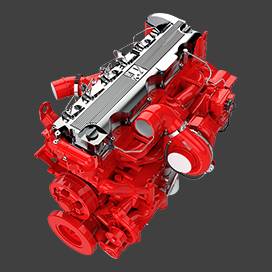Sep . 02, 2024 07:15 Back to list
High-Performance Brake Drum Materials for Enhanced Vehicle Safety
Understanding Brake Drum Materials An In-Depth Look
Brake drums are essential components of a vehicle's braking system, playing a critical role in the safety and performance of the car. They provide the necessary friction to slow down or stop the vehicle when brakes are applied. The materials used in manufacturing brake drums have a significant impact on their performance, durability, and overall effectiveness. This article explores the common materials used for brake drums and their respective benefits and drawbacks.
Cast Iron
Traditionally, cast iron has been the most widely used material for brake drums. Its popularity stems from its excellent heat dissipation properties, which are crucial during braking. Cast iron's ability to absorb and dissipate heat minimizes brake fade, a phenomenon where brakes lose effectiveness due to overheating. Additionally, cast iron is relatively inexpensive and can withstand wear and tear over time.
However, while cast iron is robust, it is also heavy. Increased weight can negatively affect fuel efficiency and overall vehicle handling. Furthermore, cast iron is prone to corrosion if not properly maintained, which can lead to structural weaknesses over time.
Aluminum
Aluminum is increasingly being used in brake drum manufacturing due to its lightweight nature. A significant advantage of aluminum drums is their ability to reduce the overall weight of the vehicle, contributing to better fuel economy and improved performance. Aluminum also offers excellent heat dissipation, similar to cast iron, which helps maintain consistent braking performance under various conditions.
brake drum material

On the downside, aluminum is generally more expensive than cast iron and may not offer the same level of durability. It is also more susceptible to deformation under extreme heat and high-stress conditions, which can compromise braking efficiency.
Composite Materials
The introduction of composite materials in the construction of brake drums has opened new avenues for performance enhancement. Composites, often made from a combination of materials such as carbon fiber and resin, are known for their lightweight yet strong properties. This can lead to improved vehicle performance and reduced unsprung weight—beneficial for handling and ride comfort.
Moreover, composite brake drums often exhibit excellent resistance to thermal expansion, reducing the risk of warping under extreme braking conditions. However, they can be cost-prohibitive and may not be as widely available as traditional materials.
Choosing the Right Material
Selecting the appropriate brake drum material ultimately depends on the specific vehicle requirements and driving conditions. For everyday driving and cost-sensitive applications, cast iron remains a reliable choice. In contrast, performance-oriented vehicles may benefit from the advantages of aluminum or composite materials.
Overall, advancements in brake drum material technology continue to evolve, offering consumers various options tailored to their specific needs. As automotive technology progresses, we can expect even more innovative materials that will enhance braking performance, safety, and environmental sustainability, paving the way for the next generation of vehicles. Understanding these materials' properties and characteristics is essential for making informed decisions, whether for maintenance or upgrades.
-
Durable Brake Drum MAZ for Heavy Duty Trucks | High Performance
NewsAug.26,2025
-
FUWA: Premium Quality, Reliable Performance & Innovative Solutions
NewsAug.25,2025
-
Liza Brake Drum: Superior Quality & Performance for Safe Driving
NewsAug.24,2025
-
Iveco Brake Drum | Premium OE Quality for Daily & Eurocargo
NewsAug.22,2025
-
Your Brake Drum Man: Quality & Performance Parts
NewsAug.21,2025
-
Explore Japan: Ultimate Travel Guide & Authentic Experiences
NewsAug.19,2025
